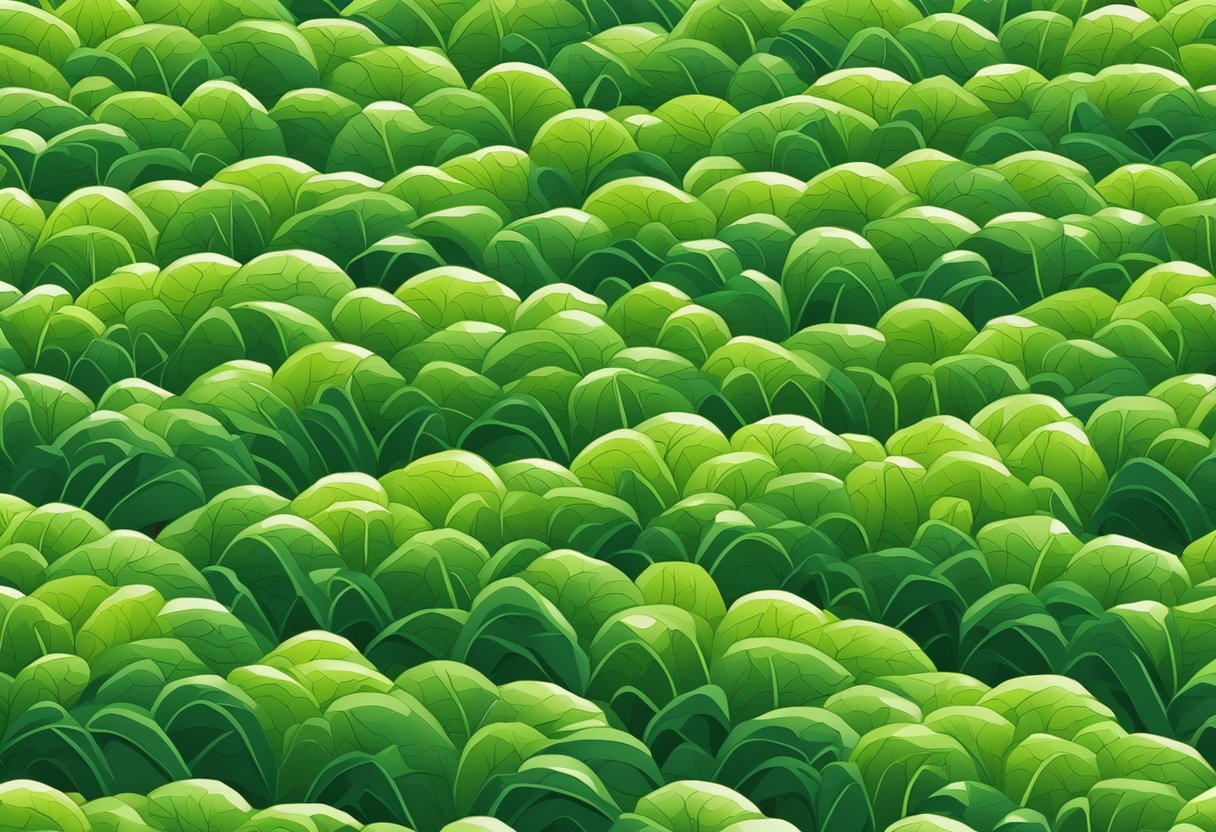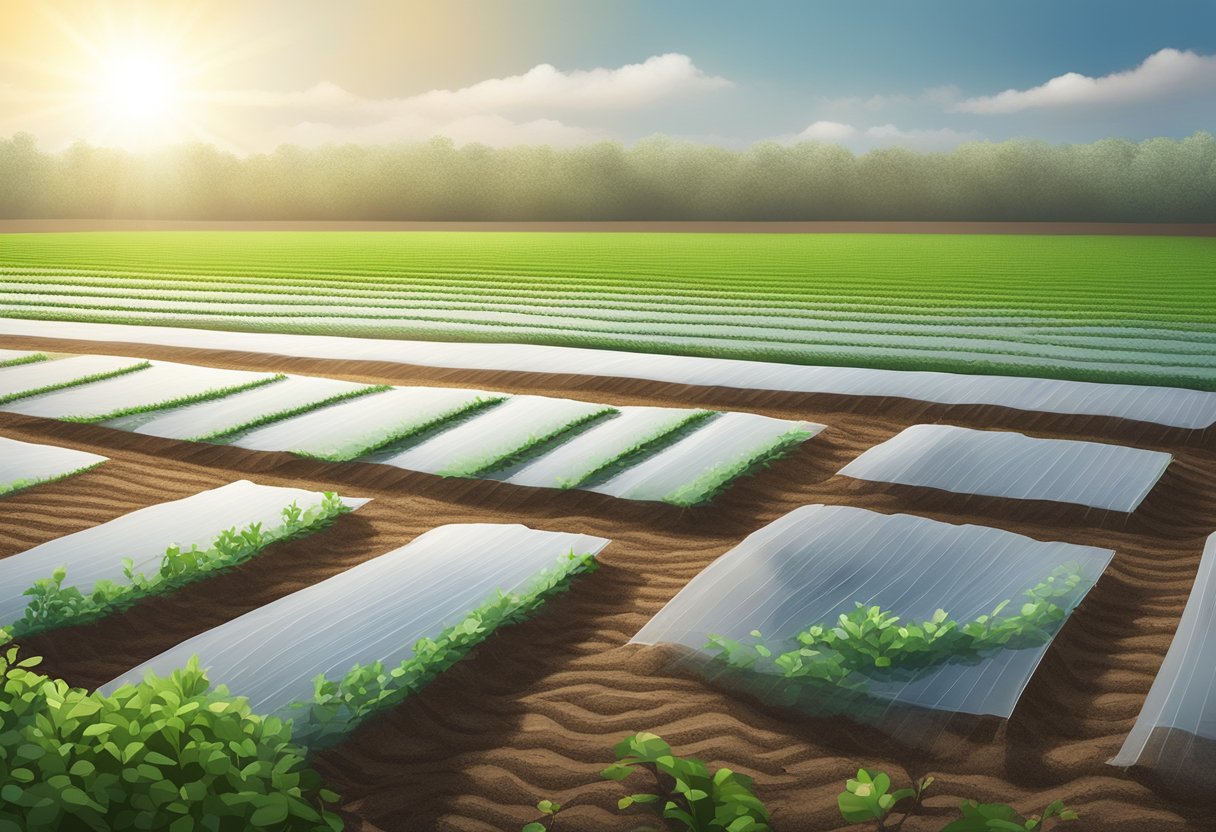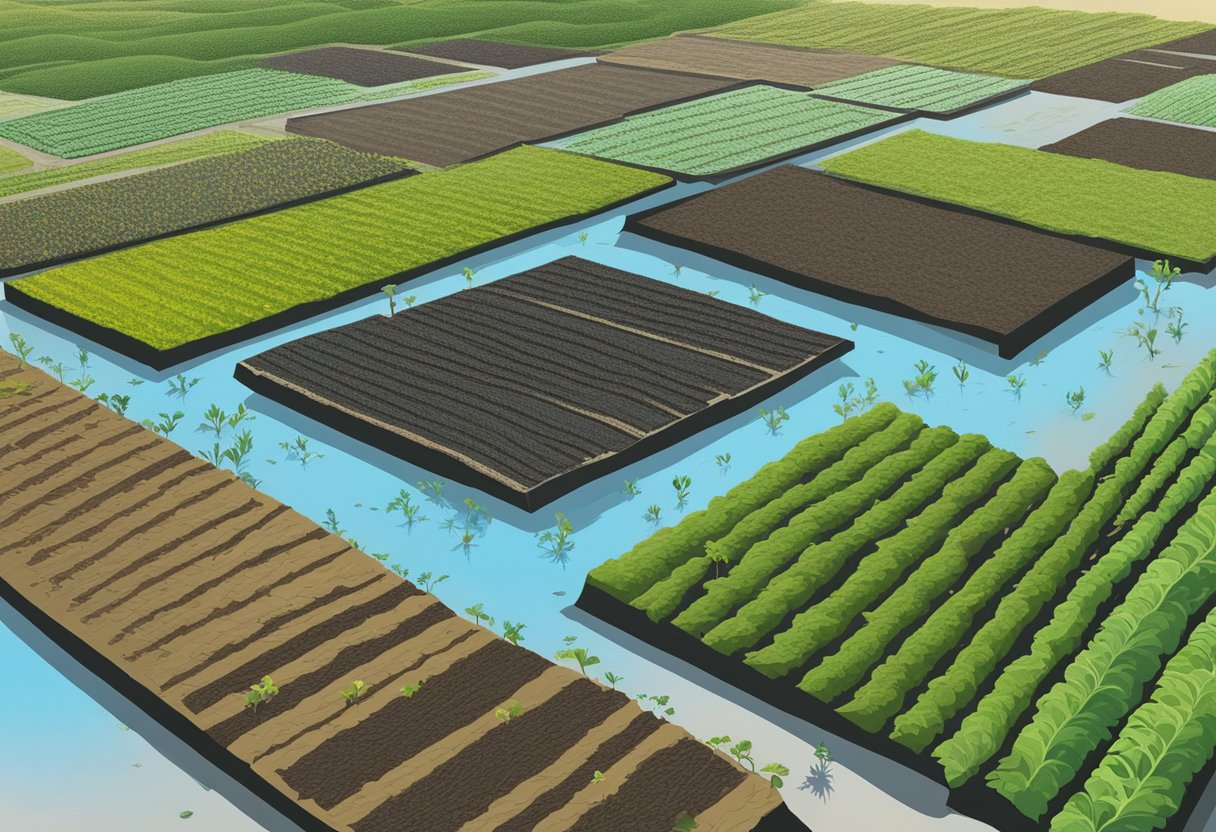In our modern agricultural practices, we often turn to innovative solutions to enhance crop production and efficiency, and plastic mulch has emerged as a popular choice. The primary advantages we observe with plastic mulch include weed suppression, soil moisture retention, and the warming of soil. These benefits contribute to earlier and potentially increased yields of crops. As farmers, we lay this mulch in thin sheets over the soil where crops are to be planted, with slits or holes made to accommodate the plants.

However, as we become more environmentally conscious, we also recognize the challenges plastic mulch presents. Disposal is a significant concern; the mulch often cannot be reused and frequently ends up in landfills where it contributes to plastic pollution. Recycling options do exist, but they are not always easily accessible or cost-effective for all farming operations.
We are aware that the use of plastic mulch is a double-edged sword. While it can improve our agricultural output, the environmental footprint it leaves behind is hard to ignore. Biodegradable alternatives are gaining attention, promising to offer some of the same benefits without the same level of environmental harm. Nevertheless, until such alternatives are widely available and cost-competitive, our industry continues to grapple with the balance between immediate agricultural needs and long-term sustainability goals.
Benefits and Applications of Plastic Mulch

When we employ plastic mulch in agriculture, we aim to enhance various aspects of crop production, from boosting yields to more efficient water usage.
Improving Crop Yields and Quality
By using plastic mulch, we’ve observed considerable increases in yields, especially for vegetables like peppers and melons which benefit extensively from the soil warming effect of the mulch. With a consistent temperature, these crops mature faster and have a longer growing season, which often translates to produce of higher quality.
Advantages in Weed and Pest Management
The barrier created by plastic mulch inhibits weed growth effectively by blocking sunlight required for their germination. We find this method significantly more cost-effective than manual weeding and notice a reduction in detrimental pests as well, due to the controlled environment stifling their usual habitat.
Soil Moisture and Temperature Regulation
One of the key benefits of plastic mulching is the ability to maintain optimal soil temperature and moisture levels. We witness the soil retaining heat better, critical for crops like lettuce that are sensitive to temperature fluctuations. Additionally, the moisture retention cuts down on water loss through evaporation, crucial during hot weather.
Optimization of Water and Nutrient Use
Where resources are scarce, we resort to plastic mulch to make every drop count. It’s particularly compatible with drip irrigation systems, allowing for precise water and nutrient delivery straight to the plant roots. We have found that this targeted approach means less waste and runoff, with consequent savings on water and nutrients essential for healthy crops.
Environmental and Management Challenges

We confront significant obstacles in the utilization of plastic mulch, primarily spanning environmental concerns and management challenges. These issues necessitate urgent attention to mitigate their impact on ecosystems and agricultural economics.
Disposal and Environmental Impact
Plastic mulch disposal is a pressing issue, as most conventional mulch films are non-biodegradable, leading to environmental pollution. When polyethylene mulch degrades, it fragments into microplastics that can persist in the soil, affecting soil health and crop yield. The United States, among other countries, grapples with the accumulation of plastic waste in agricultural settings. This waste not only affects terrestrial ecosystems but also poses a threat to aquatic environments through runoff. Biodegradable options, while helpful, can vary in their degradation rates depending on soil texture, microbial biomass, and climate conditions, affecting their practicality and reliability.
Alternatives and Sustainable Practices
Sustainable practices urge us to consider alternatives like organic mulches — straw, wood chips, or grass clippings, which contribute to soil organic matter and can enhance microbial activity. However, although these options offer better ecological profiles, they may not provide the same level of weed control or soil moisture retention as traditional black plastic mulch. Studies, including those by the University of Kentucky, have explored eco-friendly products like biodegradable polymers and aliphatic polyesters, which aim to offer the benefits of plastic mulch without the enduring environmental footprint.
Management Equipment and Costs
In our pursuit of higher yields, the equipment and costs for managing mulch—whether it’s laying down high-density polyethylene (HDPE), black polyethylene film, or biodegradable mulch—must be carefully considered. The initial investment in plastic layer equipment and the cost of mulch materials themselves can be significant. Furthermore, conventional plastics may require additional disposal costs or contribute to long-term degradation of soil health. The use of row covers and alternatives may influence the microclimate around crops like eggplant, summer squash, and broccoli, which can impact overall farm management practices, including the reliance on herbicides and the frequency of mulch replacement due to damage or excessive heat.